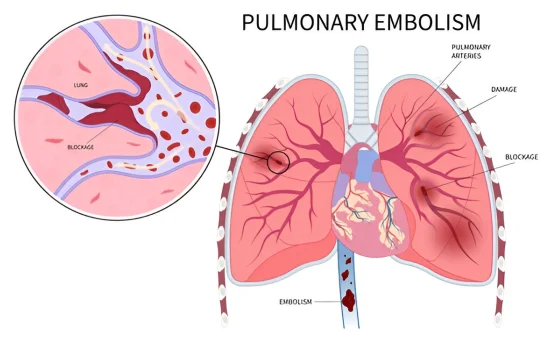Pneumonectomy surgery is a major surgical procedure involving the complete removal of one lung. It is primarily performed to treat serious conditions such as lung cancer, severe lung infections, trauma, or irreparable damage to lung tissues. While the thought of removing an entire lung may sound daunting, this life-saving procedure can significantly improve the quality of life—or even survival—for patients with critical pulmonary diseases.
As respiratory health continues to be a growing concern globally, especially with rising cases of lung cancer and chronic lung infections, pneumonectomy has become an important part of thoracic surgical care. Understanding its symptoms, causes, diagnosis, and treatment options is crucial for anyone who may be facing this procedure.
Why Pneumonectomy Surgery is Performed
Pneumonectomy surgery is considered when no other medical or less invasive surgical options are sufficient. It is usually the last resort, but in many cases, it’s the best solution for preventing disease progression, managing complications, and improving survival rates.
Here are the main reasons for performing pneumonectomy:
- Lung Cancer: The most common reason, especially if the tumor has spread extensively within one lung.
- Severe Pulmonary Infections: Such as tuberculosis or lung abscesses that cannot be treated by antibiotics or partial resection.
- Trauma or Injury: When one lung is irreparably damaged due to accidents, surgery may be necessary to prevent infection and further complications.
- Congenital Defects or Abnormalities: In rare cases, malformations from birth may require surgical removal of a non-functional lung.
Despite the complexity of the operation, many patients go on to live healthy lives with one lung, adapting well to their new physiology over time.
Symptoms That May Lead to Pneumonectomy Surgery
While the surgery itself is not for treating symptoms directly, certain symptoms may signal underlying lung conditions that ultimately necessitate
pneumonectomy. Common symptoms include:
- Persistent coughing (sometimes with blood)
- Shortness of breath that worsens over time
- Chest pain or discomfort
- Unexplained weight loss
- Chronic fatigue
- Recurrent lung infections
- Wheezing or noisy breathing
These symptoms are typically associated with conditions like lung cancer, bronchiectasis, or tuberculosis. If symptoms persist despite medical therapy, further investigations may lead to the recommendation of a pneumonectomy.
Causes Behind Conditions Requiring Pneumonectomy Surgery
Several diseases and factors may lead a thoracic surgeon to recommend complete lung removal. The primary causes include:
- Lung Cancer:- Lung cancer is by far the most common cause. In advanced cases, the cancer may be localized in one lung but spread extensively within it, making lobectomy or segmentectomy insufficient. Non-small cell lung carcinoma (NSCLC) is most commonly treated with pneumonectomy.
- Tuberculosis (TB):- TB can lead to lung tissue destruction, especially in drug-resistant cases. Pneumonectomy may be required when the infection becomes localized but untreatable through medications alone.
- Trauma:-Penetrating injuries or blunt trauma to the chest can cause severe lung damage or internal bleeding that necessitates removal.
- Fungal or Bacterial Infections:- Rare, aggressive infections like aspergillosis or necrotizing pneumonia may damage a lung to the point of needing surgical removal.
- Bronchiectasis:- Chronic, irreversible damage and dilation of airways can cause repeated infections and respiratory failure, which may ultimately require lung resection.
Diagnosis Before Pneumonectomy Surgery
A comprehensive diagnostic evaluation is essential before determining whether a pneumonectomy is appropriate. Diagnostic steps may include:
Imaging Tests
- Chest X-ray: To check for any obvious structural abnormalities.
- CT Scan or MRI: Offers detailed views of the lungs, allowing doctors to evaluate the extent of disease.
- PET Scan: Used especially in cancer cases to detect if tumors have spread to other parts of the body.
- Bronchoscopy:- A procedure where a camera is inserted into the lungs to inspect airways and collect tissue samples.
- Pulmonary Function Tests (PFTs):- These tests measure how well your lungs are working. A patient must have enough lung function to survive with just one lung.
- Biopsy:- For confirming cancer or infection through tissue analysis.
- Blood Tests and ECG:-To assess the overall health and ensure the patient can tolerate surgery.
Treatment Process: The Pneumonectomy Procedure
Pre-Surgery Preparation
- Medical clearance and optimization of any chronic conditions.
- Smoking cessation (if applicable).
- Nutritional support and pulmonary rehabilitation.
The Surgical Procedure
- General anesthesia is used.
- A large incision is made in the side of the chest.
- The affected lung is carefully detached and removed.
- Blood vessels and airways connected to the lung are sealed.
- A chest tube may be placed to drain fluid or air post-surgery.
The surgery may take several hours and is performed by a specialized thoracic surgeon in a hospital setting.
Post-Surgery Recovery
- Hospital stay of 7–10 days (varies based on complications).
- Breathing support and pain management.
- Gradual physical activity and pulmonary rehab.
- Regular follow-ups to monitor healing and prevent infections.
Life After Pneumonectomy
Living with one lung may seem challenging, but many patients adapt remarkably well. With proper rehabilitation and lifestyle changes, individuals can resume normal daily activities, including work and light exercise.
Key adjustments include:
- Avoiding smoking and pollutants.
- Eating a healthy, protein-rich diet.
- Practicing breathing exercises.
- Regular medical check-ups to monitor lung function.
Conclusion
Pneumonectomy surgery is a serious but often necessary procedure for individuals with advanced lung diseases. While it involves significant risks and a challenging recovery period, it can be life-saving and lead to a better quality of life for many patients.
If you or a loved one is facing conditions like lung cancer, severe infection, or lung damage, consult with a qualified thoracic surgeon to understand whether pneumonectomy is the most effective solution. Early diagnosis, timely intervention, and proper post-operative care are key to successful outcomes.























